How to Strategically Expand and Grow as an MSP
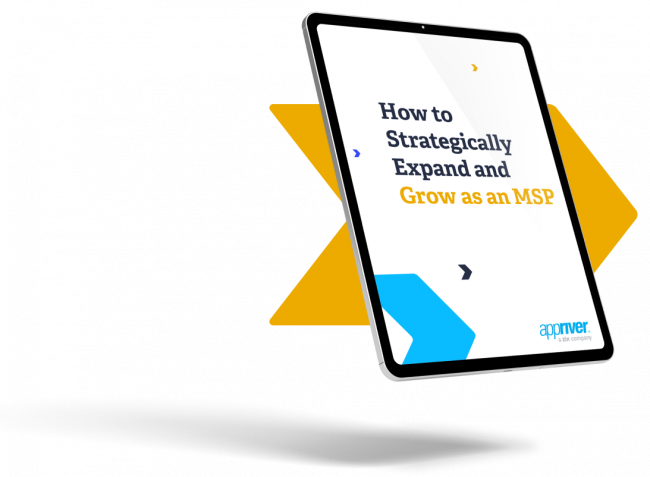
What’s inside the ebook?
There are over 25,000 managed services providers (MSPs) operating today. While they come in all sizes and serve many different verticals, most of them have remarkably similar origin stories.
You’d be hard-pressed to find one that didn’t start as a relatively small operation gaining most of its new clients through word of mouth. And you’d have an even harder time trying to find a large MSP that uses that same growth model today. In other words, most MSP founders realize sooner or later that word of mouth isn’t going to cut it; they’re going to have to pivot to an intentional growth strategy if they want to stay competitive.
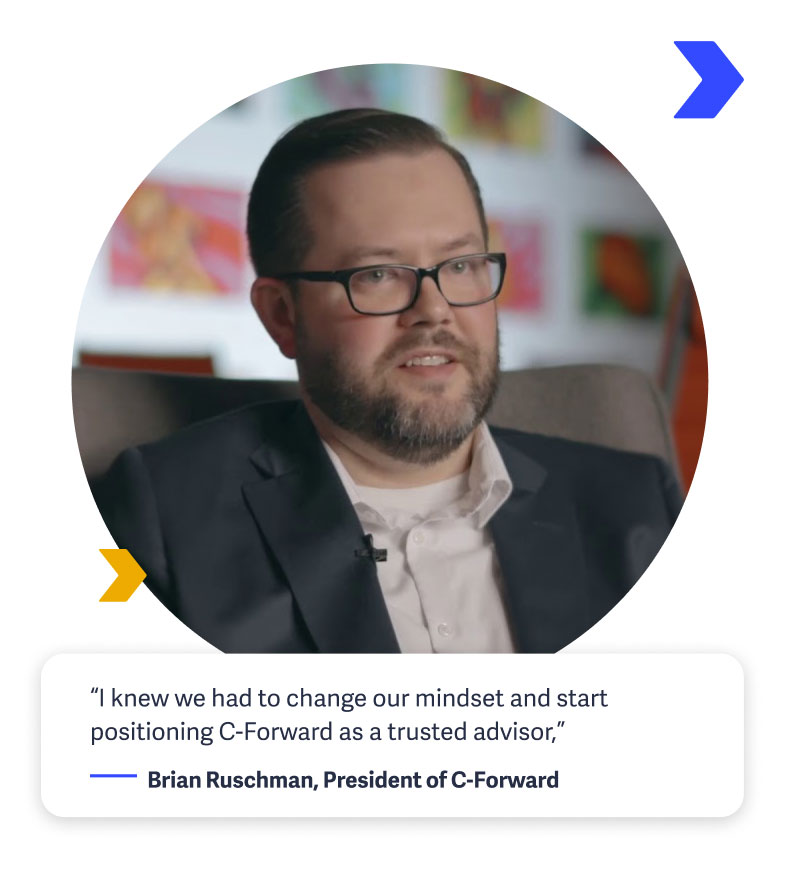
For Brian Ruschman, President of C-Forward, this moment arrived in 2015. He had been helping to build the business since 2006, first as a network technician and then as a sales manager. To any outsiders looking in, C-Forward was doing great, but Brian knew something had to change. The business had grown rapidly using an hourly-rate model, but his technicians were tired and the company was constantly coming up against billing disputes with its customers.
This meant completely changing the business plan from an hourly pricing structure to a per-user, per-month model. It also meant that C-Forward would have to stop supporting every tech solution its customers were currently using, and streamline its tech stack to a smaller number of tools and backups.
“We knew we were rolling the dice,” says Brian. But the change was necessary, and today, Brian attributes those strategic changes as the fuel that allowed C-Forward to grow into the company it is today. Having a consistent, streamlined approach to service has allowed the company to grow steadily, finding strength within a defined set of guidelines.
It’s also allowed Brian to be more intentional about who C-Forward takes on as clients.
“These days, I am very open with people when I go and meet with them about what will work and what won’t. If I see that the way they want to work or how they want to pay is not conducive to how we want to support them, I’ll give them the names of some other companies that will.”
So, how does an MSP go from a small and scrappy startup to a streamlined operation that can scale in the right way?
The answer is in a deliberate growth strategy.
This eBook will explore each stage of setting an MSP up for the right kind of growth.
Adopting a growth strategy
Is it time to make a change?
Every MSP reaches its strategic growth tipping point at one time or another. So how do you know when you’ve hit yours?
Here are 4 telltale signs that you're ready to move beyond organic growth:
-
Your founder is still your salesperson
Many MSPs start out as a one-person operation, with the founder acting as the lead technician, hiring manager, and sales team. This makes sense when the company is young; after all, “sales” often just means “talking to whomever was referred by our last happy customer.” There will come a time when this stops making sense, though.
-
Your employees are tired
Too many MSPs are familiar with the word “yes.” Yes, we’ll support that legacy system you haven’t changed in ten years. Yes, we’ll be available for round-the-clock emergency helpdesk service. But things can only stay this way for so long before people get burnt out. If your technicians are feeling the weight of an everything-on-the-table service model, it’s time to make a change.
-
You haven’t updated your website in years
The great thing about referral-based growth is that you don’t have to do much to keep it going. Your service speaks for itself, and your happy clients speak to their friends about it. But if your growth has plateaued and your website is still a splash page with little more than a “Contact Us” call to action, there’s a lot you can do to make a difference.
-
It makes financial sense
Most intentional growth strategies require an investment in resources. For many companies, that means bringing in a third-party expert. If it’s clear that your business plan needs to level up, but you’re not sure how to take that first step, you should run the financials on whether you can afford to bring in an expert and implement the strategies they suggest.
Home in on your value prop
The first step in setting yourself up for strategic, sustainable growth is arguably the most difficult: defining your unique value proposition, or your differentiator as an MSP in a world of MSPs.
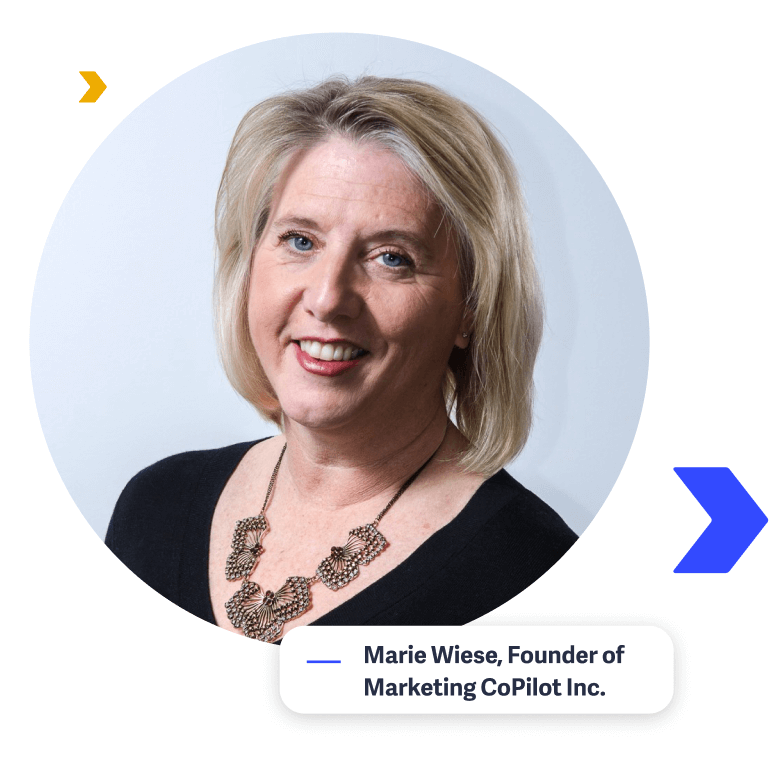
Marie Wiese, Founder of Marketing CoPilot Inc. covered this extensively in her AppRiver Masterclass “Building Your Value Proposition and Buyer Personas”—your value prop is the statement that explains what sets you apart from the competition. As you can imagine, this is difficult when you’re competing against tens of thousands of businesses that provide the same services as you. It’s made more difficult still when you consider that today’s MSPs are marketing in a time of crisis—prior to Covid, prospects could take more time learning about your business. Today, many don’t have that luxury.
Finding your value prop
A great value prop isn’t defined by you; it’s defined by the needs of your customers. Ultimately, it answers the question, “Why should my ideal customer buy from me instead of a competitor?” As you can imagine, it’s not a question you can rush to answer.
Marie outlines that a strong value prop should create clarity, credibility, and curiosity for your prospects.
You can ensure you’re doing this by taking four considerations into account:
how much do your current customers desire what your company offers?
will your ideal customers believe your claims?
do your ideal customers understand what you’re actually offering?
where else can your ideal customers get what your company offers?
Build out your buyer personas
Just as important as defining your value proposition is understanding your buyer personas, or the customers you’ll be serving with your unique offering. In her AppRiver Masterclass, Marie points out that profiling customers according to demographics just won’t cut it anymore.
Done well, buyer personas paint a much fuller picture than demographics ever could. They tell you how your best customers make their buying decisions, what kinds of problems they’re trying to solve, what motivates them to look for new suppliers, whether they like or dislike their current solution, and what they like or dislike about solutions they’ve used in the past. They also tell you about the perceived barriers your ideal prospects are coming up against (with cost often being a big one).
Focus on problem solving

This means they’re at the research stage—in other words, they already know what their problem is and now they’re looking for a solution.
Marie suggests interviewing new customers if you’re at a loss for where to start. Asking questions like how they first started thinking about their problem or opportunity, how they expressed this problem, and what they initially did to try to solve it will give you a ton of useful information.
Get the right information to the right people
Marie notes that a common pitfall for MSPs is taking an “everything, all at once” approach with their marketing and website content, hoping that the right customer will find what they’re looking for among the sea of information you’re asking them to swim in.
As you can imagine, this is not a great approach. A good, accurate buyer persona will clearly outline what your ideal customer needs, and will help you shape your sales and marketing strategy accordingly. Moreover, it shows your prospects that you respect them enough to not waste their time. Your website, marketing, and sales efforts should be tailored to your buyer personas. That means that the information you’re providing won’t be for everyone—it will be for the people who actually need it.
More than anything, your buyer personas will help you understand the emotional triggers your ideal customers will respond to. Building your homepage around keywords that tap into these triggers will signal to the right people that they’ve come to the right place.
Case study: Creating a value prop at NTIVA, 18 years in
In 2015, NTIVA’s founder, Steven Freidkin was at a crossroads. After 18 years of growing his company from a small personal technology support startup into an MSP with 80 employees and $18 million in annual revenue, he realized NTIVA could not keep growing the way it had been all those years.
The main problem was that Steven needed to start delegating more responsibility to his managers so that he could free up some of his own time. “I was working 20 hour days, seven days a week,” he says. “At this size, I realized I couldn’t keep my finger on the pulse of things anymore without completely burning out.”
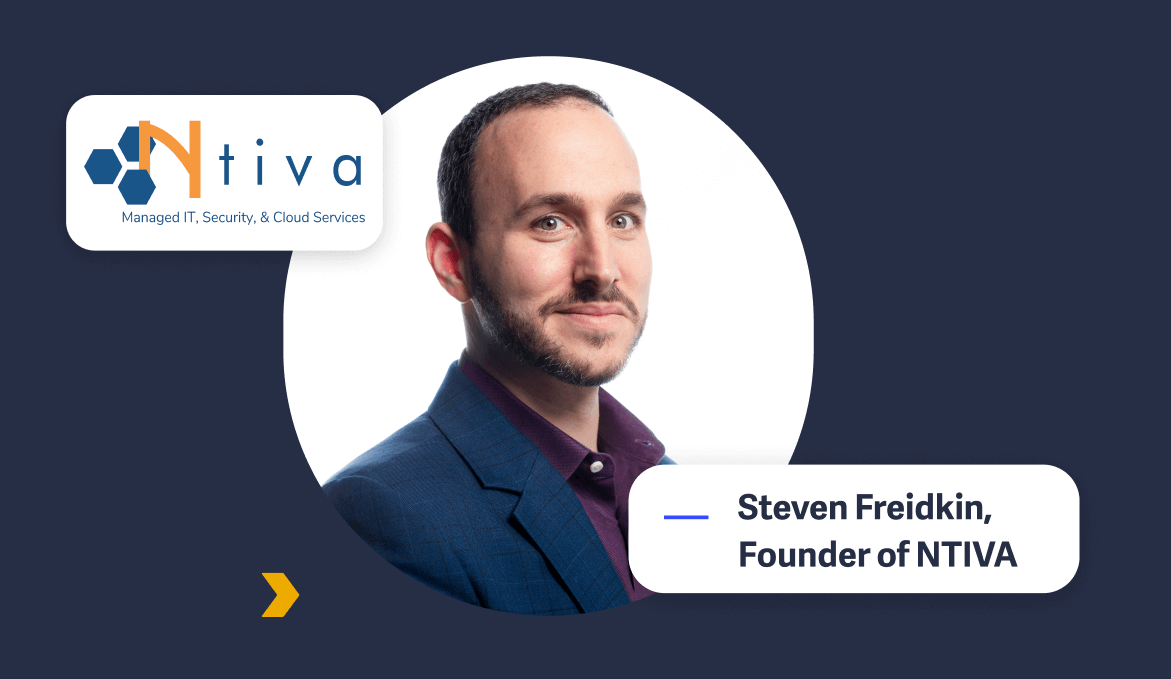
If Steven was going to set his company up for continued, sustainable growth, he’d have to get clear on what exactly NTIVA was doing that other MSPs were not, and which kinds of customers were benefiting from it. He’d also have to communicate this to his employees in a way that would align everyone on the company’s goals.
Steven thought back on the feedback he’d gotten from customers over the years, looking for a common denominator. “It was always something like, ‘Ever since we started working with NTIVA, we’ve been able to focus on actually growing our business, because the technology just works,’” he says. “I realized that our purpose as a company was to enable growth through technology.”
To Steven, the value prop was clear: NTIVA could enable growth in ways that competitors could not. He also saw that his ideal customer coincided nicely with what NTIVA provided. “The right customer is somebody who recognizes that technology is key to their growth,” he says, “And either has none or some of the resources to handle it. It’s not just a utility that can be turned on and off. Our ideal customer recognizes that technology is key to growth.”
Having a clear value prop and buyer persona allowed everything else to fall into place. “If I wanted to have a company that existed to grow people, I knew that we’d have to invest in automation so that we could elevate our technical talent to allow them to actually grow themselves personally and professionally, and free them up to help our clients,” he says.
Solidifying these facts led Steven to the realization that he’d have to invest more in organic sales and marketing, specifically focused on brand recognition. “The market was highly fragmented, but it was also highly commoditized. I knew that acquisitions were on the horizon for many MSPs, and I wanted NTIVA to be a consolidator, rather than be consolidated,” he says. “This would require us to get our name out in a big way.”
Steven presented his value prop, buyer persona, and proposed plan for growth internally. “Within weeks, everyone was aligned on what we were doing, and the pace just instantly picked up,” he says. In the years that have passed, NTIVA has only continued this growth, tying everything back to the overall goal of existing to grow people.
Streamline your offering:
Bundling and services
Many MSPs fall into a similar trap in their infancy: adopting an “anything goes” mentality when it comes to supporting clients’ technology. It’s an easy trap to fall into; saying no to a new client can feel like a gamble, and it can feel easier just to say yes and figure it out as you go.
The problem is that this setup gets unwieldy pretty quickly. Without a structured approach to technology support, you’re at risk of a “jack of all trades, master of none” problem, not to mention a team of burnt out technicians.
There are two important tactics that can help you streamline your support model:


Narrowing down your product and service offering
In his AppRiver Masterclass, “A Deep Dive Into Strategic Bundling”, Karl Palachuk posits that the first step is to start by figuring out what you sell. He recommends going into your past sales and categorizing them into hardware, software, and services. From there, he encourages MSP leaders to narrow down their offerings to no more than two brand names per product or service.
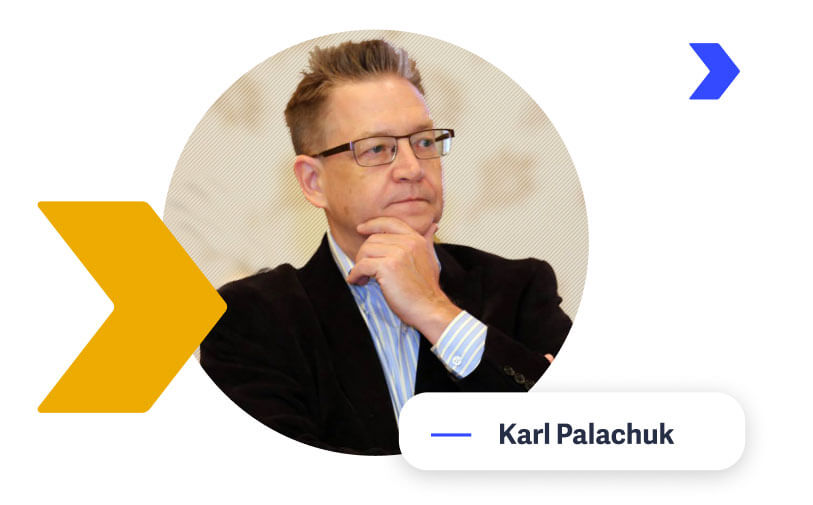
“If you minimize the number and variety of things you sell, you will make more money,” he says. It makes sense: when you put your attention into a smaller offering, you (and your technicians) can be an expert on that offering.
The reality is that you’re never going to be able to satisfy everyone’s needs, but you can make informed decisions about what works best for you and your customers, given the value prop and buyer personas you’ve already laid out.
When it comes down to it, you want to stick with whichever solutions allow your customers to work well remotely, maintain security, and reduce their costs. Many MSPs choose a comprehensive solution like Microsoft 365, which comes with a number of partner licences already built in.
Build your bundles
Once you’ve nailed down your product offering, it’s time to outline your bundles. According to Karl, bundling is non-negotiable. Laying out your levels of service into clearly-defined tiers will help customers understand what exactly they can do—and which problems they can solve—with your services. In other words, your bundles are one of the tools you’ll use to communicate your value prop.
Karl recommends offering three tiers of service—with one caveat. “No one will ever buy your middle-tier offering.” According to Karl, this is by design. What you’re really offering is two options: a core bundle made up of the products and services that every client uses without question, and a top-tier bundle that offers complete ownership of the clients’ services.
As such, the middle tier is more or less rendered obsolete. Karl recommends pricing it only slightly below your top tier, making the choice a no-brainer.
Your core bundle: the non-negotiables
Karl recommends that you start by determining what your core bundling offer will be. According to him, this should include “All the things every client will use without question.” That is, email, storage, anti-virus spam filtering, and basic hardware. Prospects shouldn’t feel as though they’re missing anything crucial by going with this option. If they choose it, they’ll still be able to do their work well and not have any security concerns.
Your top-tier bundle: the whole package
Conversely, Karl describes the top-tier bundle offering as “exactly what your ideal buyer persona needs.” This bundle should include everything that would solve your ideal customer’s needs: everything in the core bundle plus vendor relations, client roadmaps, and top-level support. Your mid-tier bundle can offer all this, minus the extras that make it an “every problem solved” scenario.
Case study: Overhauling the offering at C-Forward
Let’s revisit our MSP from the beginning of the eBook. Though C-Forward was always clear about its value prop and buyer persona, and has always been focused on supporting non-profit clients with the tools that will allow them to do their work without barriers, the product and service offering was in need of an overhaul.
For a number of years, C-Forward charged every client by an hourly rate and relied on phone calls to know when to spring into action. The team of technicians also supported whichever existing IT infrastructure their clients came to them with, which was starting to get dizzying. “They had to know every solution on the market,” says Brian.
Also, due to the hourly rate model, billing disputes were a major pain point. “It was always, ‘Why did it take somebody so long to do this? I don't want to pay this amount of money. I could have done it myself for less money,’” says Brian.
After attending a conference with other MSPs, Brian knew they’d have to pivot their business plan. “I knew from that point forward that we had to change our mindset and start positioning C-Forward as a trusted advisor. We’re the IT experts.
We should be the ones picking products and deploying them,” he says.
This meant they’d have to streamline their product offering and tell customers which tools and backups to use. It also meant they’d have to change their billing model to per user, per month rather than hourly.
These changes didn’t pay off right away. “There were some really tough conversations for a two to three-year period,” says Brian. “We had to go to each of our 150 clients and tell them we wanted to change our model to bill them per user, per month. Overall, it amounted to less monthly and yearly expenses, but only about half of our customers at the time were willing to do that.”
However, it’s a change that’s come to fruition over time. Narrowing down the product and service offering has allowed technicians to be the experts, meaning they can support clients better.
It’s also changed the way they seek out new clients. When Brian meets with prospects now, his approach is much different than it would have been years ago. “Now I can come to a meeting and say, ‘This is how we want to support you. Does that sound like something that will work?’ and if it doesn’t, we don’t move forward.”
Overall, the changes Brian made have set C-Forward up for slow, steady, and sustainable growth. “There’s no reason for us to change our approach now,” says Brian. “It’s really working for us.”
Streamlining sales
Avoid the technical knowledge curse
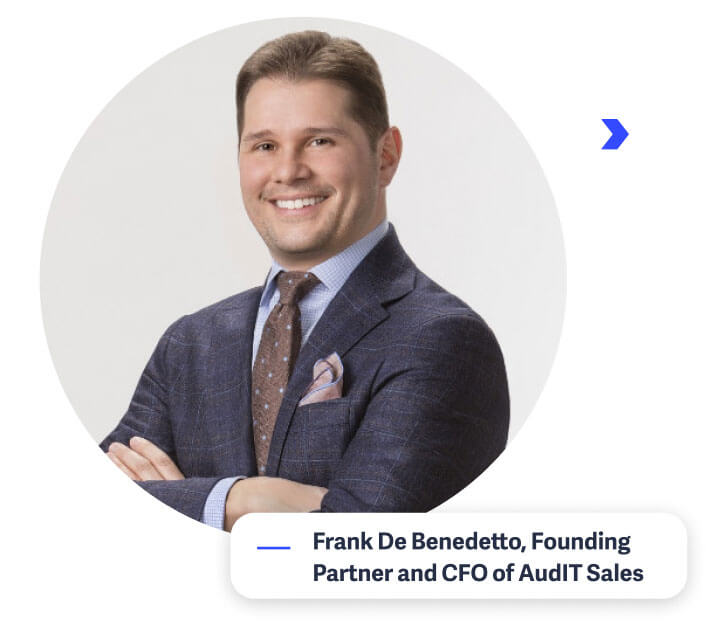
When many MSP founders are asked about their sales process, they’ll answer something like, “What sales process?” It’s not uncommon for the founder to function as a sales team of one, fielding prospects through word of mouth referrals.
However, when priorities change and you want to get serious about growing strategically, your sales process is something you can’t ignore. According to Frank De Benedetto, Founding Partner and CFO of AudIT Sales, setting this up is where many MSPs fumble.
The 4-Step Sales Success System
In his AppRiver Masterclass, “The 4-Step Sales Success System,” Frank noted that many MSPs tend to steer too far from casual, referral-based conversations when they start building a sales team. Referring to the “curse of knowledge,” he pointed out that while many MSP salespeople have deep technical knowledge of their offering, they’re not able to communicate it in a way that clearly outlines a problem-solution framework. Instead, people fall into the trap of trying to sell technical solutions to business problems.
How to educate your prospects
According to Frank, your sales activities should be defined, measurable, and predictable in order to set you up for strategic growth. This means that you’re not building your proposal from scratch every time you’re faced with a new prospect. Instead, it means finding an approach that educates your prospects in the right way.
Frank frames the sales education process as a responsibility: if MSPs fail to give small and medium-sized businesses the opportunity to buy the IT solutions they need in an informed way, it’s the end user who will suffer.
MSPs can use their knowledge of security and best-practice IT infrastructure to help these businesses succeed in the right way.
Solution-focused selling
Your sales pitch doesn’t need to be complicated. Frank stresses something we’ve heard before: it’s a solution you’re selling, not a product or service. Your job is to use your value prop to help prospects understand what their problem is, and how you’ll get them from their current state to their desired state.
There are a few steps you can follow to do this the right way:
-
Update your discovery
The discovery phase is where you build trust and credibility, and also where you get a handle on your prospect’s current state. This is mostly about listening and distilling your prospect’s current state into business problems (rather than technical problems).
-
Sell the way people buy
People don’t want to wade through a sea of information. Instead, use simplicity, emotional triggers, unexpectedness, visuals, and language that doesn’t get too in-the-weeds about your knowledge to communicate current and desired states. Frank’s AudIT system uses red, yellow and green visuals to show prospects where their current gaps are, and how a proposed solution could get them from red and yellow to green.
Make your mark with marketing
5 things every website needs
In her AppRiver Masterclass “Work Your Website,” Marie Wiese outlines a troubling fact: most MSP’s websites just aren’t cutting it. “The primary purpose of your website is lead nurturing,” she says. But too many websites offer little more than a vague, generic description of services with a “learn more” call to action.
According to Marie, your website is your best opportunity to communicate your value as an MSP and answer any inquiries that your ideal customer may have. As such, your website needs to be very clear about who you serve (remember your buyer personas?) and why they should want to buy from you, using your value prop.
Rather than throwing information on a page and hoping the right person will find something that resonates with them, Marie suggests using your website as an opportunity to create engagement using strategic, resourceful content that creates meaningful interactions over time.
Marie outlines five things every website needs to create engagement:
This is where your value prop and buyer personas come in. Be clear about what you offer and why it matters to the customer.
“Learn more” doesn’t say much, and it doesn’t tell prospects how they can move forward in their buying journey.
Again, “learn more” and “contact us” won’t do much to move prospects through the sales funnel. Give them useful, relevant content to interact with.
Think of this as stating the problem your prospect is likely facing, or the “current state” they want to get out of.
This is where you outline the solution you offer, or the future state your prospects can move to.
Marketing is an investment, not a cost center
For MSPs that have been relying on organic growth for some time, shifting perspective on the importance of marketing efforts can be a tough pill to swallow. Keep in mind that investing in marketing is a long term strategy that will take time to show returns.
Don’t be surprised if your marketing tactics take up to a year to show ROI. In the meantime, be on the lookout for softer success metrics. Getting more qualified prospects who show more engagement is a great sign that you’re on the right track.
Case study: Aligning on values at 1Path
1Path’s road to success has been long and multi-faceted. While most MSPs tend to focus on a narrow subset of customers and verticals, 1Path’s goal has been lofty from the beginning: to serve clients in a number of verticals with service that feels personal.
In order to achieve this, Patrick Kinsella, 1Path’s SVP and Chief Technology Officer, had to be strategic from the beginning. “When you come from an entrepreneurial culture, there's always a vision that drives the business,” says Patrick.
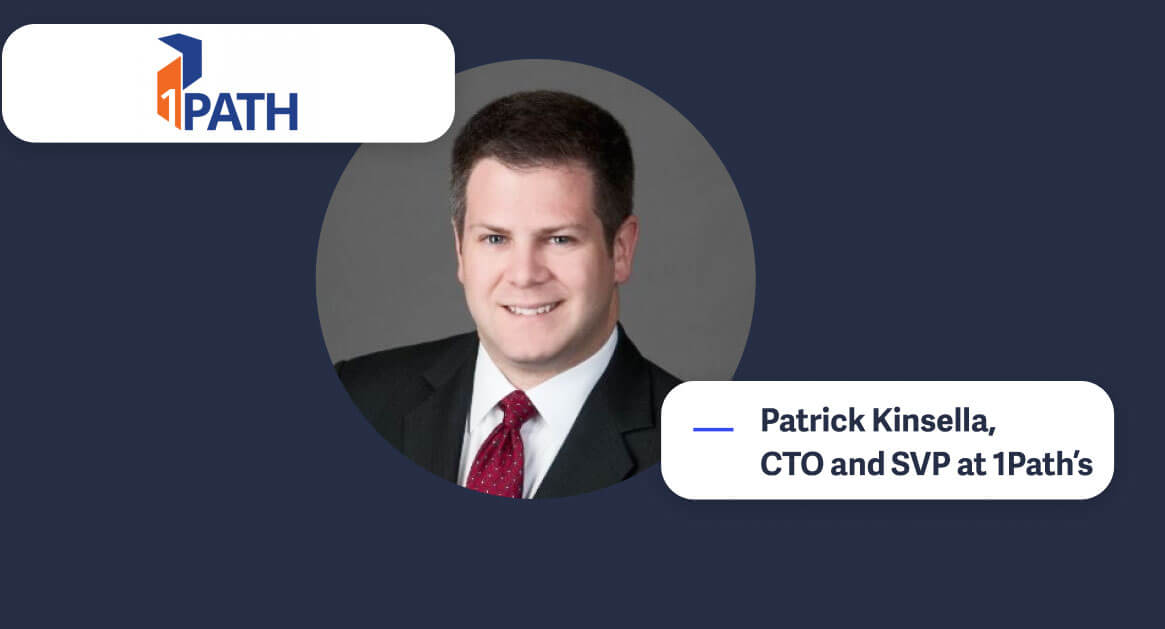
“Once you reach a certain size and scale, you need to find a way to live by that vision and carry yourselves with that vision as a core part of your being.”
For 1Path, achieving these goals meant aligning on values, which are communicated with the acronym IEAT: integrity, excellence, accountability, and teamwork. Those four core values were employee-created and are at the heart of every activity that the company engages in, from sales to marketing to how they hire and train employees. “It was important to us to make the investments that would help us define our target market, the size of our business, and our target verticals,” says Patrick.
Injecting the IEAT framework into everything the company did paid off. “Our best customers are organizations that view IT as a utility and as a resource and not simply as a line item or something that can be cut,” says Patrick. “We’re trying to align with organizations that do view technology as an avenue to do their business better.”
This set of values is clear across 1Path’s web presence. Their website is robust and focuses on the solutions they offer, with a clear, succinct promise: “Give us 30 days, and if we’re not able to exceed our success metrics, we’ll help transition you to a technology partner who can.” The website also clearly outlines how they help their clients achieve success: through alignment, assignment, and achievement.
It’s obvious that this strategy has worked. Patrick is proud to talk about 1Path’s clients today. “We’re in a fortunate position where we can choose to do business with clients whose values align with ours,” says Patrick. “Frankly, in a service business, you have to be smart about who you're willing to serve, because it truly is a partnership.”
You have the tools to grow the right way
Changing anything about your business is daunting, and it can be tempting to stick with the status quo if it’s been working for you so far. With the right tools, though, strategic growth is absolutely possible for any MSP.
By starting with a solid foundation of a sound value prop, buyer persona profile, and bundling offer, you’ll eliminate confusion—both internally and to your prospects—about exactly what you can offer that other MSPs can’t. Building out your sales and marketing efforts from there will be made all the more easy with a single source of truth to compare your efforts against.
Like any business, however, growth takes many shapes and depends on a number of factors. Any successful expansion strategy should be open to change and reevaluation. Pay attention to what works, and get rid of what doesn’t.
Take a look at our Masterclass series for more in-depth ideas about how to approach growth, and feel free to contact us if you have any questions for our experts.



